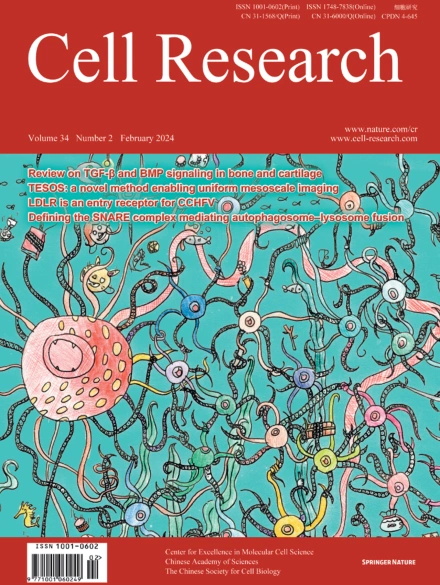
Advanced Search
Submit Manuscript
Advanced Search
Submit Manuscript
Volume 34, No 2, Feb 2024
ISSN: 1001-0602
EISSN: 1748-7838 2018
impact factor 17.848*
(Clarivate Analytics, 2019)
Volume 34 Issue 2, February 2024: 140-150 |
LDLR is an entry receptor for Crimean-Congo hemorrhagic fever virus
Zhi-Sheng Xu1,2,3,† , Wen-Tian Du1,2,3,† , Su-Yun Wang1,2,† , Mo-Yu Wang1,2,3,† , Yi-Ning Yang1,2,3 , Yu-Hui Li1,2,3 , Zhen-Qi Li1,2,3 , Li-Xin Zhao1,2,3 , Yan Yang1,2,3 , Wei-Wei Luo1,2,3 , Yan-Yi Wang1,2,3,*
1Wuhan Institute of Virology, Center for Biosafety Mega-science, Chinese Academy of Sciences, Wuhan, Hubei, ChinaCrimean-Congo hemorrhagic fever virus (CCHFV) is the most widespread tick-born zoonotic bunyavirus that causes severe hemorrhagic fever and death in humans. CCHFV enters the cell via clathrin-mediated endocytosis which is dependent on its surface glycoproteins. However, the cellular receptors that are required for CCHFV entry are unknown. Here we show that the low density lipoprotein receptor (LDLR) is an entry receptor for CCHFV. Genetic knockout of LDLR impairs viral infection in various CCHFV-susceptible human, monkey and mouse cells, which is restored upon reconstitution with ectopically-expressed LDLR. Mutagenesis studies indicate that the ligand binding domain (LBD) of LDLR is necessary for CCHFV infection. LDLR binds directly to CCHFV glycoprotein Gc with high affinity, which supports virus attachment and internalization into host cells. Consistently, a soluble sLDLR–Fc fusion protein or anti-LDLR blocking antibodies impair CCHFV infection into various susceptible cells. Furthermore, genetic knockout of LDLR or administration of an LDLR blocking antibody significantly reduces viral loads, pathological effects and death following CCHFV infection in mice. Our findings suggest that LDLR is an entry receptor for CCHFV and pharmacological targeting of LDLR may provide a strategy to prevent and treat Crimean-Congo hemorrhagic fever.
https://doi.org/10.1038/s41422-023-00917-w